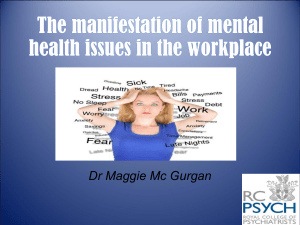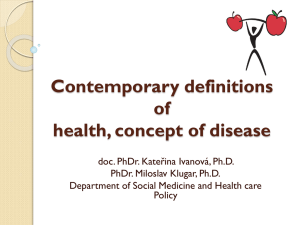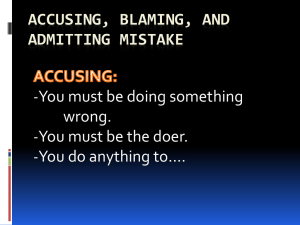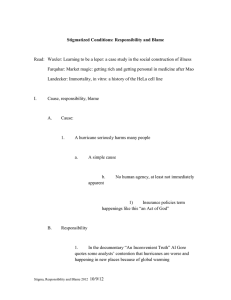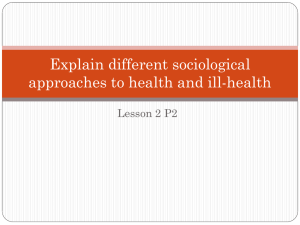Biological Approach to explaining abnormality (Evaluation, Ao2)
advertisement
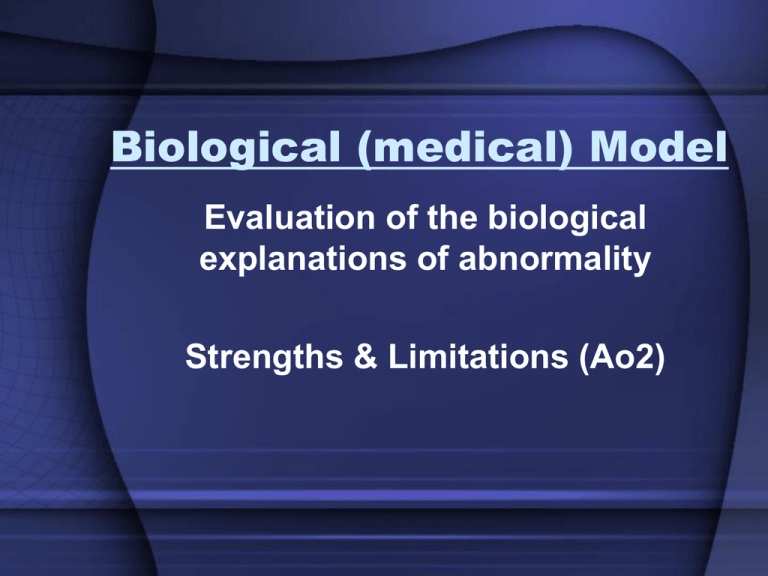
Biological (medical) Model Evaluation of the biological explanations of abnormality Strengths & Limitations (Ao2) Biological (medical) Model • Issues for evaluation: – The evidence – The use of drugs – The patient role – Blame and stigma Biological (medical) Model • Inherited genetic abnormality – Some evidence from family & twin studies • Endocrine & neurochemical abnormalities – Some supportive findings, but problems with discerning cause & effect Biological (medical) Model • Evidence – Plenty of studies have found that psychological disturbance is associated with biological changes (e.g. in neurotransmitters & hormones) • However… – It is often impossible to tell whether such changes are a cause or an effect of the psychological symptoms Biological (medical) Model • The use of drug therapies – The biomedical model has led to the development of drug therapies that are often effective in controlling psychological symptoms • However… – When drugs are discontinued, symptoms often return, suggesting the actual cause is elsewhere Biological (medical) Model • The patient role – The biomedical model offers people a role and treatments they are familiar with, and are often happy to go along with • However… – It encourages them to become passive and dependent and to hand over control of their lives to the expert – this might not actually be good for them. Biological (medical) Model • Blame & stigma – Biomedical processes are assumed to be beyond patient’s control; they are not blamed for their predicament or behaviour • However… – Critics argue that society isolates and stigmatises the mentally ‘ill’, which is just as bad Biological (medical) Model • Strength 1: It is scientific. The results of treatment can be measured and manipulated until we have a satisfactory outcome, e.g. we can vary the dosage of Prozac until the depressed patient is able to function adequately. • Strength 2: The patient is seen as being ‘ill’ and therefore not responsible (to blame) for their behaviour. Although the label of mental illness still carries a stigma in our society. It is reassuring to most people to learn that their behaviour has an organic/medical cause that can be corrected by medical treatment. 8 Biological (medical) Model • Limitation 1: It may be useful in dealing with the symptoms of mental illness but it may not be effective in resolving the underlying causes. Mental illness may have multiple causes, including cognitive and behavioural causes. It does not take these into consideration. It is always dangerous to reduce a complex phenomenon to a single explanation (reductionism). • Limitation 2: Medical intervention may have undesirable side effects. Very few drugs can be used without negative side effects, e.g. prolonged use of Prozac is associated with suicidal thoughts. Drugs may also encourage addiction and dependency similar to nicotine addiction. In addition, techniques such as ECT and psychosurgery are invasive, unpredictable and often irreversible. Evaluating how the Biological Approach explains abnormality “Nrrr…” N R RR NO BLAME REDUCTIONIST RELINQUISH RESPONSIBILITY “The biological approach can be evaluated in a number of ways. Firstly, there is the concept of ‘no blame’. This means that if a person is labelled as mentally ill, their actions are not their fault, but that of their biological problem. Secondly, it can also be criticised as people are encouraged to become passive patients, handing over responsibility for their illness to others. This is relinquishing responsibility. Finally, the biological explanation of abnormality is criticised as being reductionist, as it breaks down a complex issue into a fundamental level when it is more likely a combination of many factors *Biological Approach* (AO2) No Blame Relinquishing Responsibilty If we diagnose someone as having a mental “illness” then it has implications… When using the medical model people are encouraged to be passive… Reductionist The biological approach tends to break down explanations to the most basic level… EXPLAIN the criticisms in more detail APPLY research that evaluates the Biological Approach:




